Ruffles have a way of making any sewing project look complete, yet the process behind them is refreshingly simple.
At the heart of every ruffle is the gather – a straightforward method that draws fabric into neat folds.
Mastering this one skill opens the door to clothing with shape, décor with dimension, and details that feel intentional rather than improvised.
In this article, I’ll show you how to make gathers step by step, using techniques that work whether you’re sewing a dress, curtains, or a child’s apron.
You’ll learn practical methods that give you control over fullness and finish, so your ruffles look smooth, balanced, and beautiful every time.
What Are Gathers and Ruffles in Sewing?
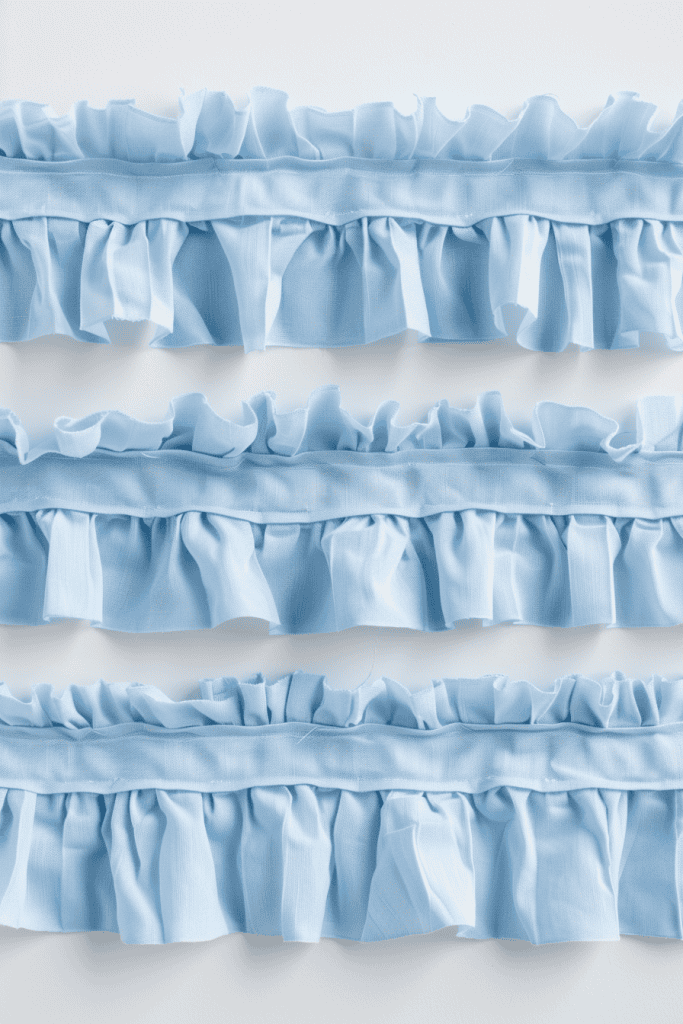
In sewing, a gather is created by running long stitches through fabric and then pulling the thread to draw the fabric together.
This shortens the seam and forms small folds or puckers that can be adjusted until they’re even.
Think of a gather as the technique – the way you compress fabric to create fullness.
A ruffle is the finished piece of fabric after it has been gathered.
It is usually a strip of fabric sewn onto another part of a garment or project to add volume, texture, or decoration.
For example, a strip of gathered fabric stitched to the hem of a dress becomes a ruffle, giving it shape and flow.
To put it simply:
- Gather = the process of drawing fabric into folds
- Ruffle = the fabric strip that has been gathered and attached to something else
Understanding this distinction makes the sewing process more approachable.
Once you know how to make a gather, you can apply it anywhere to create ruffles that look polished and professional.
Sewing Tools You Need for Making Gathers
The right tools make gathering fabric much easier. You just need a few basics that get the job done.
Here are the essentials you’ll want to have on hand:
- Sewing machine with straight stitch
- Quality thread
- Pins or fabric clips
- Measuring tape or ruler
- Iron and pressing surface
Choosing Fabric for Gathers
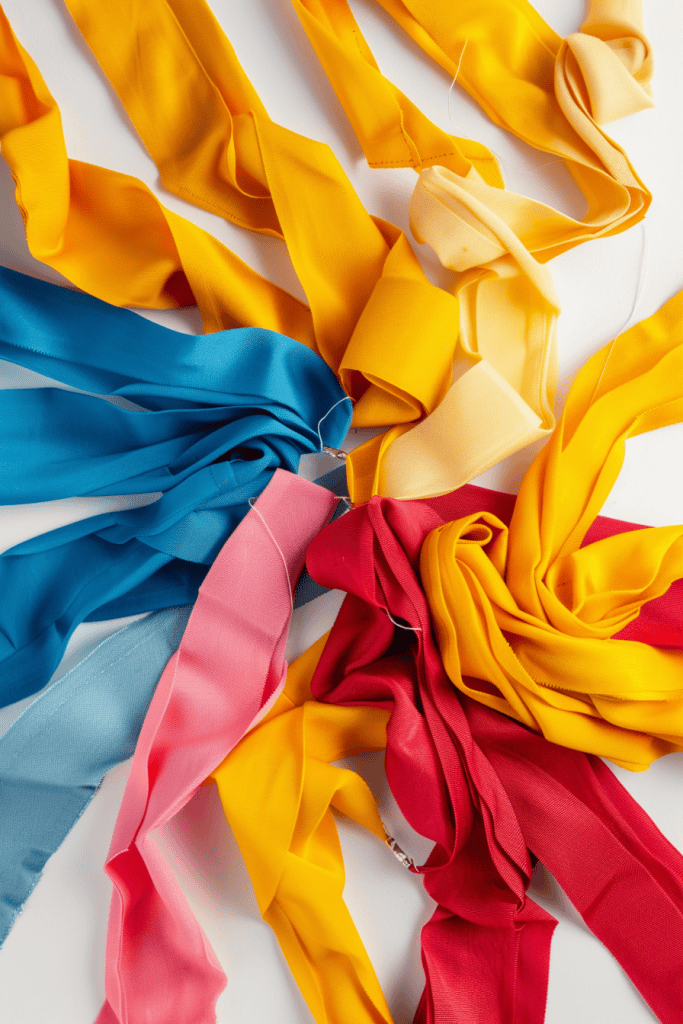
Lightweight to medium-weight fabrics – like cotton, linen, or lawn – gather beautifully without bulk.
Heavier fabrics can also be gathered, but they require sturdier stitches and sometimes more patience to distribute evenly.
Preparation Tip: Before you sew on your actual project piece, test your chosen gathering method on a scrap of the same fabric. This helps you see how the fabric behaves and lets you adjust stitch length or tension before committing.
Step-by-Step Gathering Techniques for Beginners
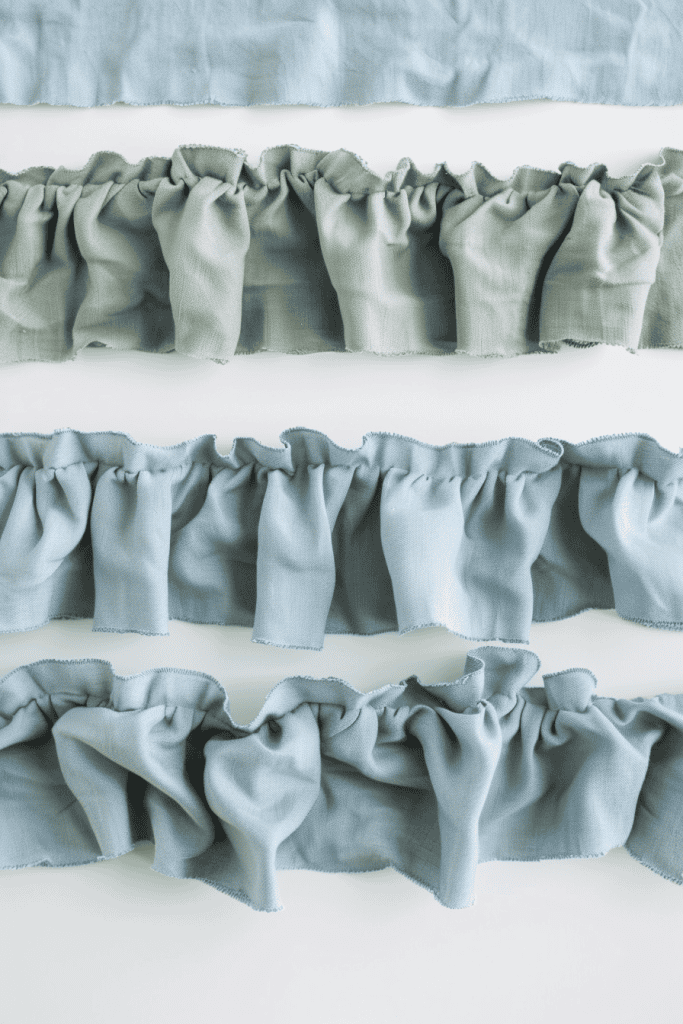
There are several ways to gather fabric, and each method has its advantages.
Start with the one that feels most approachable, then try others as you grow comfortable.
How to Make Ruffles with a Two-Row Basting Stitch
This is the most reliable method and works for nearly every project.
- Set your sewing machine to the longest straight stitch length.
- Sew two parallel rows of stitches along the edge of the fabric, leaving long thread tails at both ends.
- Hold the bobbin threads gently and pull to gather the fabric.
- Adjust the folds until the fabric length matches the piece it will attach to.
How to Gather Fabric with a Zigzag Over a Cord
This method creates strong gathers that won’t break.
- Lay a piece of strong cord or heavy thread along the fabric edge.
- Sew a zigzag stitch over the cord, making sure not to catch it in the stitches.
- Pull the cord to draw up the gathers.
- Distribute the fullness evenly, then secure the cord ends before sewing the ruffle in place.
How to Sew Ruffles Using Elastic Thread
Great for stretch and flexible gathers – ideal for waistbands or children’s clothing.
- Hand-wind elastic thread onto your bobbin.
- Use regular thread on top and sew straight lines across the fabric.
- The fabric will gather automatically as you stitch.
- Repeat rows for more fullness, keeping them evenly spaced.
How to Use a Gathering Foot for Quick Ruffles
If you sew lots of ruffles, this presser foot is a time-saver.
- Attach the gathering foot to your sewing machine.
- Place fabric under the foot and sew as usual.
- The foot gathers the fabric automatically while stitching.
- Adjust stitch length or tension for more or less fullness.
Proven Tips for Even Gathers and Perfect Ruffles
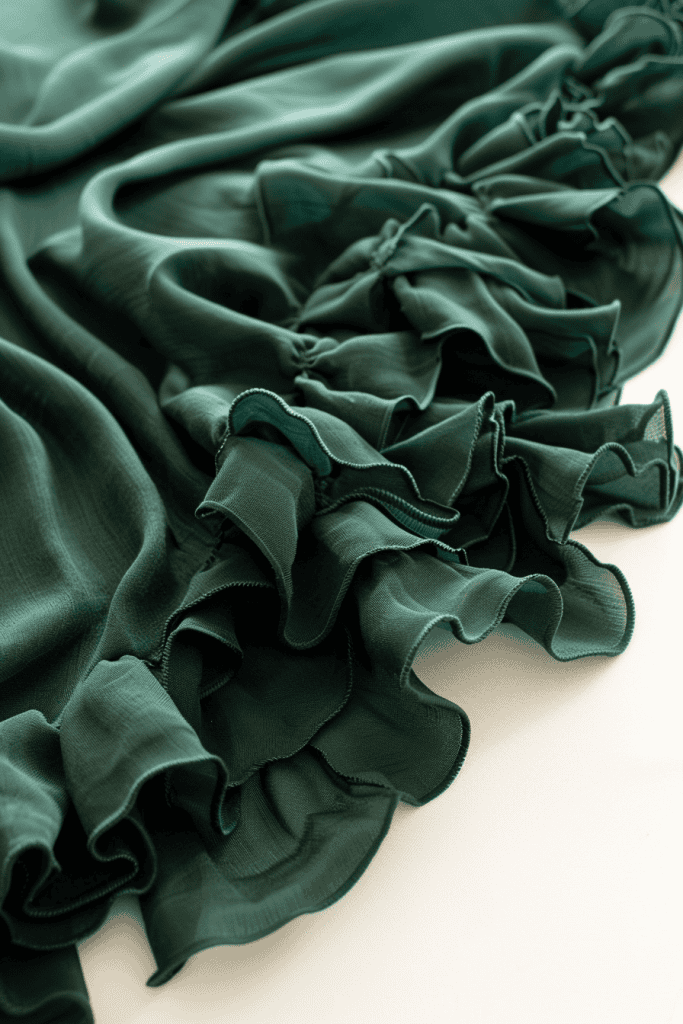
Once you’ve stitched your gathers, a few simple steps will help you achieve a polished finish.
Evenness and control are what transform raw gathers into ruffles that look intentional and professional.
- Divide fabric into sections – Mark both the ruffle strip and the base fabric into quarters (or more for long pieces). Pin at each section, then adjust gathers to fit between the marks. This keeps fullness balanced across the whole seam.
- Spread gathers gently by hand – Use your fingers to move the folds along the threads until they’re consistent, avoiding any clumps.
- Press lightly with steam – After sewing the ruffle onto your project, press with a warm iron to set the folds. A light touch is all you need to keep the texture soft but secure.
- Match seam lengths carefully – Before stitching permanently, double-check that your gathered piece and your project edge are the same length.
- Secure thread ends – Knot or backstitch the ends of your gathering stitches so they don’t slip out while you sew.
These small habits add up to ruffles that not only look beautiful but also hold their shape through wear, washing, and use.
Quick Troubleshooting for Gathers
Even with preparation, gathers sometimes need a little adjustment.
Here’s how to bring them back in line:
If Gathers Look Uneven
Uneven gathers are common and easy to fix.
Instead of pulling across the entire length of fabric, work in small sections.
Use your fingers to slide the folds gently along the gathering threads, spacing them out until the distribution looks smooth and balanced.
If Gathers Shift While Sewing
Fabric can sometimes move under the presser foot, causing gathers to flatten or shift.
To prevent this, secure the ruffle with more pins or clips before you start sewing.
Stitch slowly and steadily, adjusting the folds as you go to keep them exactly where you want them.
If Gathers Are Too Tight
Overly tight gathers can make the fabric bunch in ways you didn’t intend.
Loosen them by gently pushing the fabric back along the gathering threads until the folds spread evenly.
This allows you to control the fullness and create a consistent finish.
If Threads Snap While Pulling
Gathering threads sometimes break under tension, especially with long seams.
To avoid starting over, sew a third row of basting stitches.
This backup row gives you more security and smoother results, even if one of the threads snaps during the process.
With these small adjustments, you’ll find that gathers stay under control and your ruffles come out consistently neat.
Easy Sewing Projects That Use Ruffles
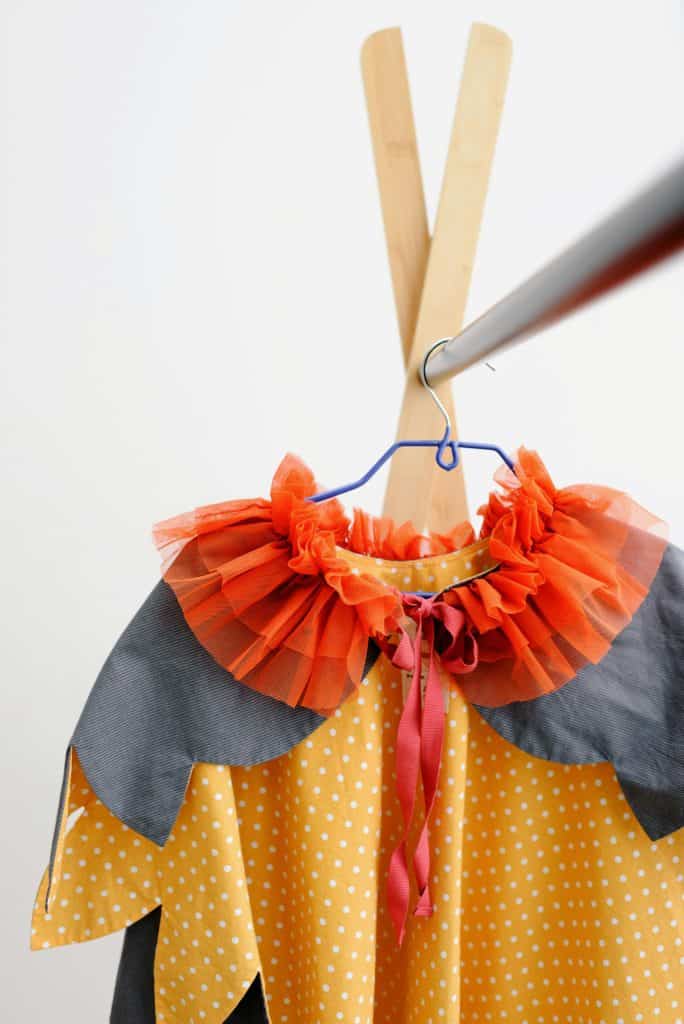
Once you know how to make gathers, you’ll see opportunities to use ruffles everywhere.
They’re a simple way to add shape, finish, or personality to projects without changing the basic construction.
Here are a few ideas to get you started:
- Skirts and dresses – Add a gathered strip to the hem for extra fullness, or layer ruffles for a tiered look.
- Blouses and tops – Sew small ruffles along sleeves, collars, or necklines for gentle detail.
- Children’s clothing – Use ruffles on pinafores, bloomers, or sleeves to create playful, durable pieces.
- Curtains – Finish a panel with a ruffled bottom edge for a softer frame around windows.
- Throw pillows – Add a ruffled border to square or round pillows to create texture and dimension.
- Table linens – Edge table runners, placemats, or cloth napkins with narrow ruffles for an elevated look.
- Aprons – A gathered ruffle at the hem or pocket adds charm while keeping the design practical.
- Tote bags – Insert a ruffle between panels or along the opening for a unique, personal touch.
- Bedding – Ruffle-edged sheets, pillow shams, or bed skirts bring a handmade finish to everyday items.
Each of these projects uses the same basic skill: making gathers and attaching them evenly.
Turn Simple Stitches into Stunning Ruffles
Gathering fabric may begin with a few long stitches, but it’s a skill that unlocks endless design options.
Once you know how to form gathers and attach them evenly, you can create ruffles that look intentional, balanced, and professional – whether on clothing, home décor, or everyday accessories.
With steady practice, each project becomes easier, and soon ruffles will feel like second nature in your sewing.
Try one of these methods on a small project this week and see how your fabric transforms.
Have questions or a favorite ruffle technique you use? Comment down below – I’d love to hear from you.
FAQs
1. How much extra fabric do I need for ruffles?
A common rule is to cut your ruffle strip 1.5 to 2.5 times longer than the edge you’re attaching it to. More length means fuller ruffles; less length gives a subtle effect.
2. What stitch length works best for gathering?
Use the longest straight stitch setting on your machine (usually 4–5 mm). Longer stitches are easier to pull and less likely to break.
3. Can I gather knit fabric the same way as woven fabric?
Yes, but with care. For knits, use the zigzag over cord method or elastic thread method – these allow the fabric to stretch without breaking the gathers.
4. Should I remove the gathering stitches after attaching the ruffle?
If the stitches are inside the seam, you can leave them in place for stability. If they’re visible on the outside, gently pick them out with a seam ripper once the ruffle is sewn down.
5. How do I stop my threads from snapping when pulling gathers?
Leave long thread tails before you start, and pull only on the bobbin threads. For extra security, sew a third row of basting stitches so you have a backup if one thread breaks.

